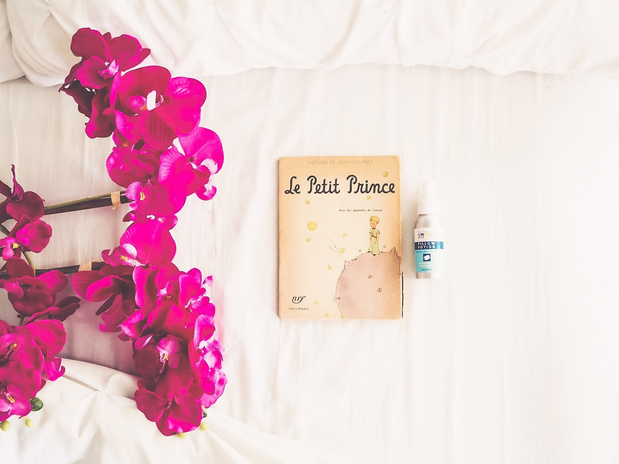In 1943, Antoine de Saint-Exupéry published Le Petit Prince; and for more than 75 years, the novella has been fostering bonds between generations and contributing to broad philosophical conversations. If you haven’t read Le Petit Prince by Antoine de Saint-Exupéry, you’re missing out on a world of inspiration and marvel. If you’re thinking “I can’t read this because I don’t speak French”, don’t worry! There are over 250 translations of the text, so there’s no excuse, ha.
In all seriousness though, Le Petit Prince has taught me more about myself and about the world around me than I could ever imagine. After glancing at the cover or at any images associated with the book, you might be wondering how this illustrated, seemingly strange story about a prince could teach a person anything about anything. Well, lucky for you, I’m going to summarize some of the most meaningful life lessons instilled in me by this insightful work of art. I hope some of them will resonate with you to some degree and get you thinking (and maybe reading, too).
1. We all have an inner child. You should reconnect with yours.
The first drawing of the narrator in Saint-Exupéry’s book represents a boa snake digesting an elephant (strange start, I know… but bear with me). When the narrator shows his drawing to adults, they all see the same thing: a banal hat. Discouraged, the narrator abandons his artistic passion until he meets the Little Prince, who immediately knew what his drawing really was.
“Les grandes personnes aiment les chiffres (…) Si vous dites aux grandes personnes: ‘J’ai vu une belle maison en briques roses, avec des géraniums aux fenêtres et des colombes sur le toit…’, elles ne parviennent pas à s’imaginer cette maison. Il faut leur dire: ‘J’ai vu une maison de cent mille francs. Alors elles s’écrient: ‘Comme c’est joli!’”
This quote explains how adults marvel over numbers and tangible beauty, often disregarding anything below the surface. They have trouble letting their creativity run wild or lose themselves in curiosity. For example, you may notice that adults believe a home is only to be cherished when it is of great monetary value. In other words, we marvel at what is lavish. Children, on the other hand, process the world much differently because they have the creative curiosity it takes to imagine an abundance of potential, regardless of tangible worth or significance.
2. Set out on a voyage of discovery.
On his journey through the various planets, the Little Prince meets an “old man who wrote huge books”. This man (the only inhabitant of his planet) saw himself as an explorer, though he has never set foot anywhere outside of his desk.
“Ce n’est pas le géographe qui va faire le compte des villes, des fleuves, des montagnes, des mers, des océans et des déserts. Le géographe est trop important pour flâner. Il ne quitte pas son bureau.”
This man exposes the Little Prince to the repercussions of remaining in our comfort zone because it is easier than taking risks. The man believes he is “too important to stroll”, and therefore stays put in his own little world. The Little Prince realizes that this is not the way he wants to live and understands that we must take advantage of the fragile time we have on Earth to live various experiences, meet different people, and travel.
I realize that travelling in this climate is virtually impossible, but perhaps we can shift this lesson a little bit to speak to what we can do right now; and that is setting out of a voyage of self-discovery. Take this time to step out of your comfort zone right at home, because travelling is not the only way that we can expand our minds and grow. Try to take risks any way that you can, and even if they make you slightly uncomfortable, don’t fret. It just means it’s working.
3. Choose, lead, and love with your heart.
The following is my favourite quote in the entire book (and frankly, in the entire world):
“Voici mon secret. Il est très simple: on ne voit bien qu’avec le cœur. L’essentiel est invisible pour les yeux.”
Loosely translated, this means: “This is my secret. It is very simple: you can only see well with your heart. The essential is invisible to the eyes.”
The Little Prince falls in love with a rose from his home planet (yes, a rose). And although it looks like every other rose on Earth, he believes his rose is unique, because he chose it, and he loves it. He feels the love he has for this rose. In short, the Little Prince represents the spontaneity of emotions. Unlike humans on planet Earth who are logical and practical and who see his rose as a simple flower, the Little Prince thinks instinctively. He chooses, leads, and loves with his heart. And this is the only way to discover the essential.
Love is not only something we feel, but also what we do. It’s forever shifting and it’s forever morphing. It becomes our entire state of being when it’s true and when it’s real. The Little Prince recognizes this and teaches us that what is essential transcends far beyond what is visible, and I just think that’s beautiful.
I know I’ve probably spoiled much of the book here, but I really hope you have taken the time and thought deeply about the points I’ve made in this entry. Please read this book if you get the chance, because I promise you, it will impact your life in some way or another. Oh, and if you’re not much of a reader, you can also find the movie on Netflix!



